SKILLS Choosing a Size (Fit & Measurement)
I received some really good questions this week after posting about Men’s sweaters, and since I love sharing I thought some of you might also want to hear the answer …
This would be my first time making a sweater and I am not sure how to measure the finished chest dimension?
1. Measuring
Great Question! We often understand how our own body relates to clothes and fit, but it’s harder with someone else, even when they are close to you. The most important place for a sweater to fit, especially for women, is in the shoulders. For women, you can adjust the bust size, but you can’t change the shoulders. For men, the chest measurement is an anchor. Use a measuring tape and with a t-shirt on (or whatever the recipient will be wearing under their sweater) measure the circumference of the widest part of their chest, just under their underarms. Here is a short article about how to take a chest measurement:
Amy Herzog also has good little videos on how to measure:
If you really want to learn more about this, check out Amy Herzog’s Knit to Flatter class on Craftsy. FYI: Knitwear designers use the measurements from the charts from the Craft Yarn Council (pictures attached) – we’ll talk about those next.
2. Choosing a Size
Choosing the right size also involves ease. Ease is the amount of space between a sweater and the body it is on. Positive ease is extra space, so the more positive ease, the looser the garment will be. Negative ease is the lack of space between a body and the garment, so how much the garment will be stretching around you. zero ease means the garment is the same size as the body. After measuring, you need to decide how much ease you want in your sweater; for example, in the size section, a pattern might suggest the garment be worn with 2″ to 4″ of positive ease. Ease is the amount of space between a sweater and the body it is on.
You need to make an executive decision and decide how loose or tight a fit you want (see below for a Measurement Hack that can help with the decision-making process). If you want a fitted look, make sure the size is around 2″ bigger than the body size you measured above. In this case, if you have a person with a 38″ chest then you may want to choose a size that’s in the 39 to 41″ range. If you want a looser fit you can choose a size with 4″ of ease. For your person above, you might go for a size in the 43 to 45″ range.
For more on ease and measuring you can go straight to the source, the Craft Yarn Council’s directives on Fit, Measurement and Size. They show you the basics of how to measure all the body parts, what different fits mean, and links to all the size charts are in the list on the right side of the screen (here’s a link to the men’s size chart).
There are a couple of things to also keep in mind, that may throw a wrench in your plans
- Different fibres behave differently, and some work better with less ease. Fibres like linen, silk, some cottons, alpaca, camel, cashmere, some superwash yarns, etc … they don’t have a lot of memory and do better with less ease. To make things more complicated, how a yarn will behave also depends on the spin and construction of the yarn.
- The yarn you choose takes up physical space in the sweater; the thicker your yarn is, the more ease you need. 6″ of ease might be roomy with a worsted weight yarn knit on 4.5mm/US7 needles, but it’ll be closer to a classic fit with a Super-bulky weight yarn knit on 10mm/US15 needles. This is why the sizing might look a bit large in patterns designed with thick yarns.
If you’d like to read more from another author, check out this article from Tin Can Knits on Fit and Size and Measurement (they’re great designers, their patterns are very reliable, I recommend them frequently).
Babies & Kids Sizing Hack
By the way, the size charts from the Craft Yarn Council are EXTREMELY helpful when choosing a pattern size for babies and kids. Here’s the scenario: the child you’re knitting for is a ‘size 4’, but the pattern only gives sizes in chest measurements. So, you can check the children’s size chart, and under size 4 it lists the average chest size is 23″ (the charts give the average actual body measurements, not garment measurements). So you would want to choose a size that around 25″ to fit a size 4 child.
Measurement Hack
If you don’t have an actual body to measure, or you don’t know what kind of fit they like, try to find a sweater or sweatshirt that’s approximately the same thickness as your yarn (don’t use a thin cashmere sweater to measure for a thicker worsted weight yarn – your ease will be off). Lay the sweater out on a hard, flat surface (like a table or the floor, not the sofa), and take a measurement across the chest at the underarms. This gives you half of the full chest measurement you’ll be looking for in the pattern.
How To Measure
Images and instructions come from the Craft Yarn Council:
1. Chest/Bust - Measure around the fullest part of the chest/bust. Do not draw the tape too tightly.
2. Center Back Neck–to-Wrist- With arm straight, measure from back base of neck, across shoulder, and along arm to wrist.
3. Back Waist Length- Measure from the most prominent bone at base of neck to the natural waistline.
4. Cross Back- Measure from shoulder to shoulder.
5. Arm Length- With arm slightly bent, measure from armpit to wrist.
6. Upper Arm- Measure around the widest section of the upper arm located above the elbow.
7. Armhole Depth- Measure from the top outside edge of the shoulder down to the armpit.
8. Waist- Measure your waist at the smaller circumference of your natural waist, usually just above the belly button.
9. Hip- Measure at the widest part of your lower hip.
10. Head Circumference- For an accurate head measure, place a tape measure across the forehead and measure around the full circumference of the head. Keep the tape snug for accurate results.
11. Sock Measurements- The following measurements are for crew-style or dress socks, which usually come several inches above the ankle and below the calf.
11a. Foot Circumference- To determine the foot circumference, measure around the widest part of your foot.
11b. Sock Height- To determine the height of the sock, measure from where you start to turn for the heel shaping to the top of the sock.
11c. Total Foot Length- To measure the total length of your foot, place a ruler or tape measure on the floor. Position the back of your heel at the beginning of the tape and the measure to your longest toe.
12a. Hand Circumference- Measure around the palm of your dominate hand, which is usually just below the knuckles. Exclude the thumb.
12b. Wrist Circumference- Measure around the widest part of the wrist.
12c. Hand Length- Measure from the wrist to the the base of the hand to the tip of the middle finger or to the top of the longest finger.

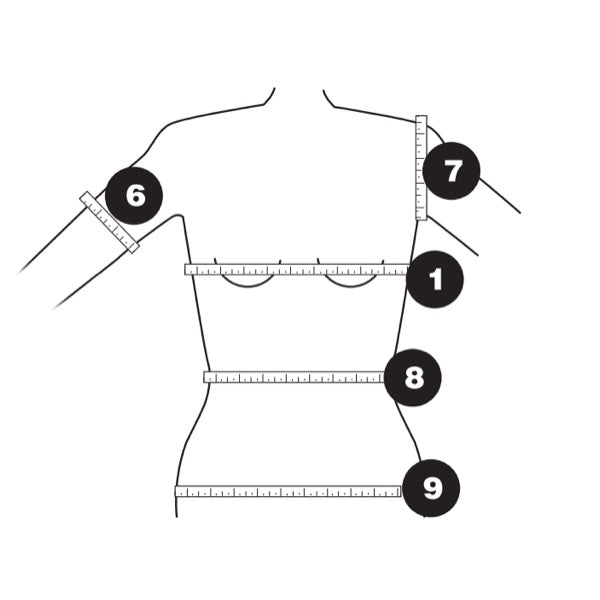

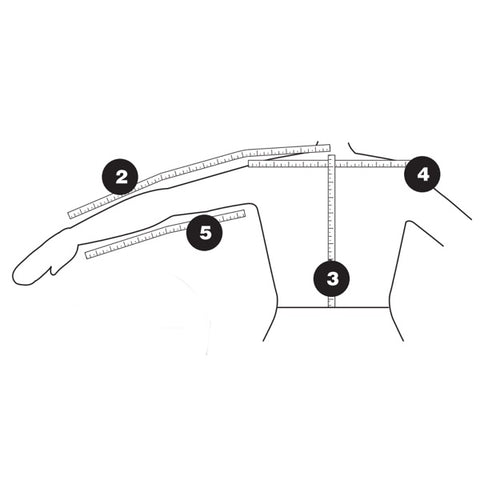
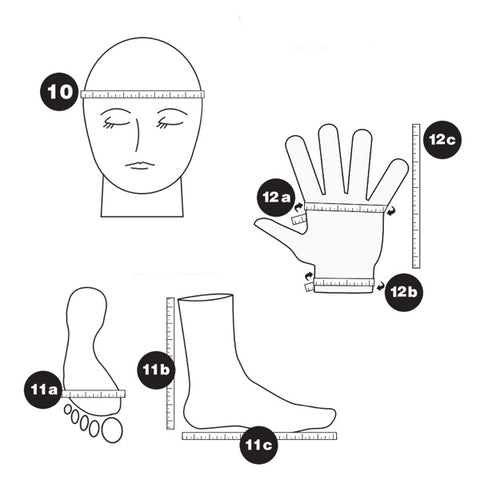
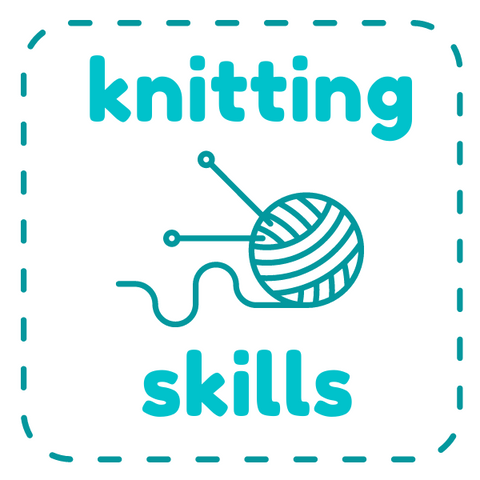
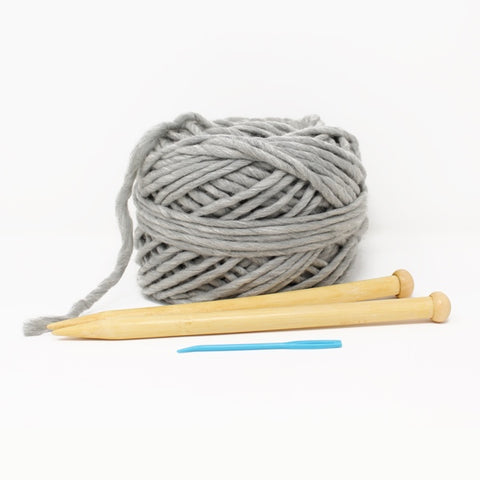
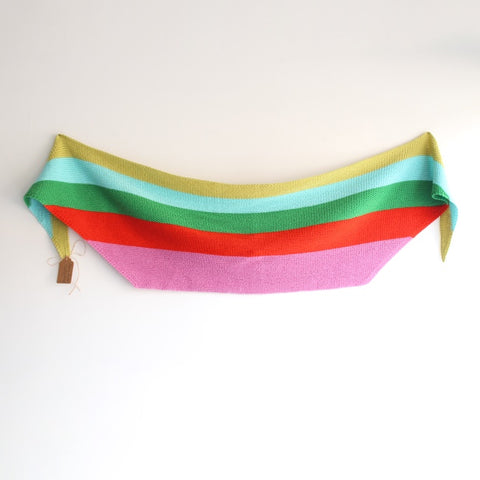

Share this item: